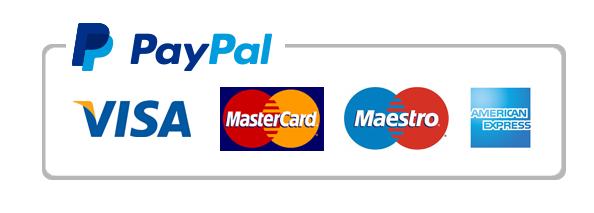Pain is a feeling that tells us something is wrong in the body. Children, just like adults, can feel pain. But unlike adults, children often have trouble explaining how much pain they feel or where it hurts. That is why managing pain in children, also called pediatric pain management, is very important. It helps children feel better, heal faster, and have less fear about going to the hospital or doctor again.
The first step in managing pain in children is to understand how to assess or measure it. This can be hard because younger children may not have the words to describe their pain. Nurses and doctors use different tools to help with this. One common tool is the “faces scale.” This has pictures of faces showing different emotions, from smiling (no pain) to crying (worst pain). The child can point to the face that shows how they feel. Older children can use a number scale, like from 0 to 10, to say how bad their pain is.
For babies and toddlers who can’t speak yet, nurses and parents look at signs like crying, facial expressions, body movements, and changes in eating or sleeping. These clues help caregivers know when a baby is in pain and how serious it is. Asking parents is also very helpful. They know their child best and can often tell when something is not right.
After understanding the pain, the next step is treatment. There are many ways to treat pain in children. Some are medical treatments, like giving medicine, and others are non-medical, like using comfort and distraction.
Pain medicine for children needs to be safe and the right dose must be given based on the child’s weight and age. Doctors may give medicines like acetaminophen (paracetamol) or ibuprofen for mild to moderate pain. For strong pain, such as after surgery or a serious injury, stronger medicines like opioids may be used, but only for a short time and with close monitoring. Nurses play a big role in giving these medicines, checking for side effects, and keeping children safe.
Non-medical ways to treat pain are also very important. These methods help children feel more comfortable and can work well with medicine. Distraction is a common and easy method. This includes reading a story, watching cartoons, playing games, or blowing bubbles. These fun activities help take the child’s mind off the pain.
For babies, holding, rocking, and singing can bring comfort. Skin-to-skin contact with a parent or using a pacifier may help calm them during painful procedures. Some children like to use deep breathing or guided imagery, where they imagine a happy place like the beach or a favorite park. Nurses teach these techniques in a way children can understand.
Parents are a big part of the pain management team. When parents stay close, children feel safe. Letting parents hold the child during treatments, or letting them help with distractions, makes the child feel supported and less scared. Nurses often work closely with families to create a plan that helps the child cope.
Sometimes, children with chronic pain (pain that lasts a long time) need special help. This may include physical therapy, counseling, or special clinics that focus only on pain. These children may need a team of doctors, nurses, therapists, and psychologists to help them live better with their pain.
Communication is key. Nurses and doctors must talk clearly with children and parents. They should explain what is happening and what to expect. Telling a child that a shot may hurt a little, but will be over quickly, helps build trust. It is also good to praise the child afterward, even for small things like holding still or being brave.
Research shows that if children’s pain is not treated well, it can lead to problems later. They may become more afraid of doctors, feel more pain than needed, or even develop long-term pain issues. That is why hospitals now try to make sure pain is checked often and treated quickly.
In conclusion, pediatric pain management means understanding a child’s pain and treating it in a way that is safe, kind, and effective. Nurses and doctors must watch carefully, listen closely, and use both medicine and comfort techniques to help. Working with parents and using tools made for children makes a big difference. When children feel less pain, they heal faster, feel safer, and have a better hospital experience. Every child deserves to feel cared for and comforted when they are in pain.
"You need a similar assignment done from scratch? Our qualified writers will help you with a guaranteed AI-free & plagiarism-free A+ quality paper, Confidentiality, Timely delivery & Livechat/phone Support.
Discount Code: CIPD30
WHATSAPP CHAT: +1 (781) 253-4162
Click ORDER NOW..



Pediatric Pain Management – blackboardmasters
Class EssayPain is a feeling that tells us something is wrong in the body. Children, just like adults, can feel pain. But unlike adults, children often have trouble explaining how much pain they feel or where it hurts. That is why managing pain in children, also called pediatric pain management, is very important. It helps children feel better, heal faster, and have less fear about going to the hospital or doctor again.
The first step in managing pain in children is to understand how to assess or measure it. This can be hard because younger children may not have the words to describe their pain. Nurses and doctors use different tools to help with this. One common tool is the “faces scale.” This has pictures of faces showing different emotions, from smiling (no pain) to crying (worst pain). The child can point to the face that shows how they feel. Older children can use a number scale, like from 0 to 10, to say how bad their pain is.
For babies and toddlers who can’t speak yet, nurses and parents look at signs like crying, facial expressions, body movements, and changes in eating or sleeping. These clues help caregivers know when a baby is in pain and how serious it is. Asking parents is also very helpful. They know their child best and can often tell when something is not right.
After understanding the pain, the next step is treatment. There are many ways to treat pain in children. Some are medical treatments, like giving medicine, and others are non-medical, like using comfort and distraction.
Pain medicine for children needs to be safe and the right dose must be given based on the child’s weight and age. Doctors may give medicines like acetaminophen (paracetamol) or ibuprofen for mild to moderate pain. For strong pain, such as after surgery or a serious injury, stronger medicines like opioids may be used, but only for a short time and with close monitoring. Nurses play a big role in giving these medicines, checking for side effects, and keeping children safe.
Non-medical ways to treat pain are also very important. These methods help children feel more comfortable and can work well with medicine. Distraction is a common and easy method. This includes reading a story, watching cartoons, playing games, or blowing bubbles. These fun activities help take the child’s mind off the pain.
For babies, holding, rocking, and singing can bring comfort. Skin-to-skin contact with a parent or using a pacifier may help calm them during painful procedures. Some children like to use deep breathing or guided imagery, where they imagine a happy place like the beach or a favorite park. Nurses teach these techniques in a way children can understand.
Parents are a big part of the pain management team. When parents stay close, children feel safe. Letting parents hold the child during treatments, or letting them help with distractions, makes the child feel supported and less scared. Nurses often work closely with families to create a plan that helps the child cope.
Sometimes, children with chronic pain (pain that lasts a long time) need special help. This may include physical therapy, counseling, or special clinics that focus only on pain. These children may need a team of doctors, nurses, therapists, and psychologists to help them live better with their pain.
Communication is key. Nurses and doctors must talk clearly with children and parents. They should explain what is happening and what to expect. Telling a child that a shot may hurt a little, but will be over quickly, helps build trust. It is also good to praise the child afterward, even for small things like holding still or being brave.
Research shows that if children’s pain is not treated well, it can lead to problems later. They may become more afraid of doctors, feel more pain than needed, or even develop long-term pain issues. That is why hospitals now try to make sure pain is checked often and treated quickly.
In conclusion, pediatric pain management means understanding a child’s pain and treating it in a way that is safe, kind, and effective. Nurses and doctors must watch carefully, listen closely, and use both medicine and comfort techniques to help. Working with parents and using tools made for children makes a big difference. When children feel less pain, they heal faster, feel safer, and have a better hospital experience. Every child deserves to feel cared for and comforted when they are in pain.
"You need a similar assignment done from scratch? Our qualified writers will help you with a guaranteed AI-free & plagiarism-free A+ quality paper, Confidentiality, Timely delivery & Livechat/phone Support.
Discount Code: CIPD30
WHATSAPP CHAT: +1 (781) 253-4162
Click ORDER NOW..